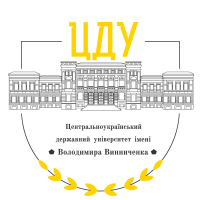NATIONAL MODEL OF INDIVIDUATION IN THE NOVEL BY MARIA MATIOS "THE SHOES OF THE MOTHER OF GOD"
DOI:
https://doi.org/10.32782/2522-4077-2024-208-24Keywords:
analytical psychology, archetype, individuation, Maria Matios, unconscious, psychology, psychopoeticsAbstract
The article provides a study of the literary interpretation of the psychological concept of individuation proposed by C. G. Jung. According to this doctrine, the human psyche develops throughout life, which contributes to the formation of an independent and unique personality. This process involves certain stages during which the structural substances of the psyche are formed and further changed (transformation of the archetypes of the individual unconscious and integration of the collective unconscious). In Maria Matios's novel «The Shoes of the Mother of God», one of the stages of personality development is vividly presented on the example of Ivanka Borsuk, who is experiencing active maturation in her teenage years. Since every person goes through individualization processes, this is reflected in numerous myths and other folklore works, which allows us to draw a parallel between the girl's journey through the night forest, accompanied by memories of various fragments of her life, and the subsequent plot twists and turns with the «hero's journey» analyzed by J. Campbell. According to C. G. Jung, this «journey» also illustrates the transformation of libido as a vital energy. This prompts an analysis of the model of individuation depicted by Maria Matios in the context of world culture and the representation of universal archetypes with a view to national flavor. The practical study involves analyzing the work at the plot level and identifying the author's artistic techniques and means that illustrate the national model of individuation in «The Shoes of the Mother of God». This emphasizes the psychologism as a qualitative characteristic of Maria Matios's work, and also illustrates the writer's archetypal thinking, which makes it possible to uniquely represent general cultural patterns and individual mental phenomena against the background of Ukrainian history. The material of the novel outlines one of the stages of development of the protagonist Ivanka's psyche, at which the formation of the Ego takes place, which corresponds to the mythical «hero's journey». Also we can see the separation of the Shadow and the formation of the Persona, which is conveyed through the reflection of the girl's inner experiences and the use of artistic parallelism, ant the activation of the Animus through interaction with male characters. The author also outlines changes in the integration of the archetypes of the collective unconscious: the transition from the dominance of the Child archetype to the implementation of the Great Mother archetype.
References
Башкирова О. Гендерні художні моделі сучасної української романістики : автореф. дис. ... докт. філол. наук. 10.01.06, 10.01.01. Київ, 2019. 35 с.
Бетко І. На шляхах духовної інтеграції (Глибиннопсихологічні, релігійно-філософські та ритуальноміфологічні мотиви в українській постмодерній прозі). Wydawnictwo Uniwersytetu Warminsko-Mazurskegow Olsztynie, 2010. 264 с.
Івашина О. Психологізм у творчості Марії Матіос: теоретичні та прикладні аспекти. Закарпатські філологічні студії. Випуск 29. Том 1. 2023. С. 269–274.
Кемпбелл Дж. Тисячоликий герой. Пер. з англ. О. Мокровольського. Львів : Terra Incognita, 2022. 416 с.
Матіос М. Черевички Божої Матері. Київ : А-БА-БА-ГА-ЛА-МА-ГА, 2022, вид. 2-ге. 224 с.
Михида С. Психопоетика українського модерну : Проблема реконструкції особистості письменника. Кіровоград : «Поліграф – Терція», 2012. 357 с.
Підгорна О. Архетипна структура буковинського наративу Марії Матіос (конспект роману «Солодка Даруся»). Літератури світу: поетика, ментальність і духовність, 2018, № 11, С. 212–223.
Савощенко Я. А. Фольклоризм авторської прози Марії Матіос : автореф. дис. … канд. філол. наук. 10.01.07. Київ, 2019. 20 с.
Фройд З. Вступ до психоаналізу. Нові висновки. Пер. П. Таращук. Тернопіль : Навчальна книга – Богдан, 2021. 552 с.
Jung C. G. Psychological types. Translated by R. F. C. Hull. Princeton University Press, 1976. 651 p.
Jung C. G. Symbols of Transformation. Second edition. Translated by R. F. C. Hull. Princeton University Press, 1976. 738 p.
Stein M. Jung's Map of the Soul: An Introduction. Open Court Publishing, 1998. 244 p.
Stein M. Principle of Individuation: Toward the Development of Human Consciousness. Chiron Publications, 2013. 250 p.








